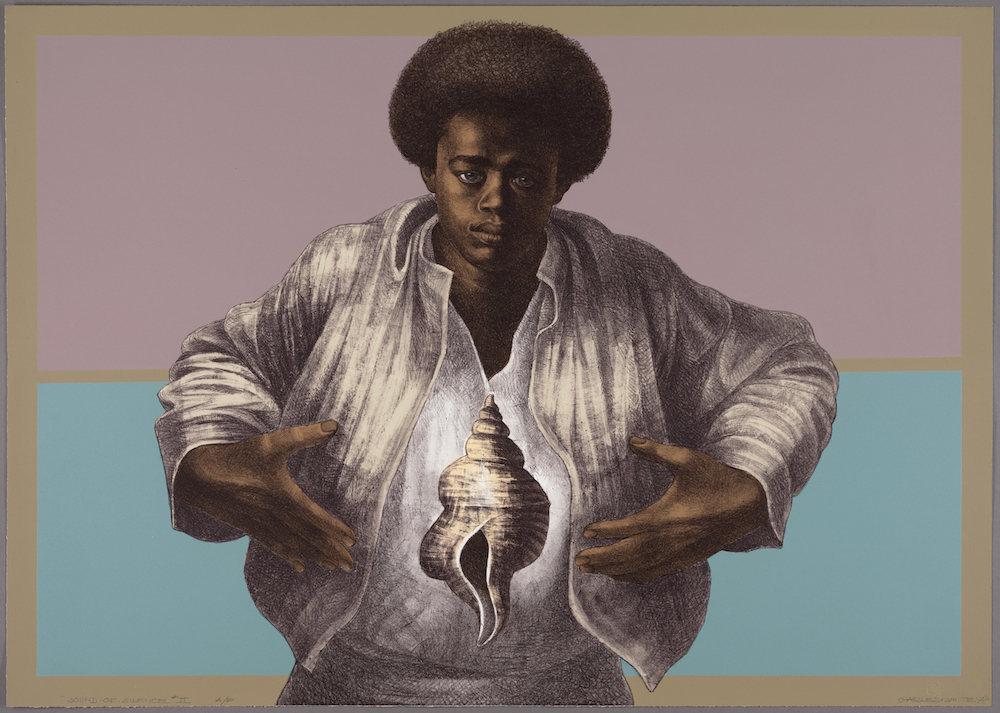
Charles White, Sound of Silence, 1978, color lithograph on white wove paper. All images: © The Charles White Archives Inc.
I have been a stalwart advocate for the legacy of Charles White. I have said it so often, it could go without saying. I have always believed that his work should be seen wherever great pictures are collected and made available to art-loving audiences. He is a true master of pictorial art, and nobody else has drawn the black body with more elegance and authority. No other artist has inspired my own devotion to a career in image making more than he did. I saw in his example the way to greatness. Yes. And because he looked like my uncles and my neighbors, his achievements seemed within my reach. The wisdom he dispensed to the many aspiring artists who gathered around him was always straightforward: do your work with skill and integrity, everything else is superfluous. It is a right time for him to be considered again in the fullness of his expertise. And fitting that he should be recognized with a survey in three of the best museums in the world.
A close friend of mine described me as a radical pragmatist. I embrace this no-nonsense distinction wholeheartedly. It is a character trait that matches the sense of myself I’ve had from as far back as I can remember. I am not one who goes in much for magical thinking. I don’t believe in destiny, fate, or things like divine guidance, either. Material reality has spirit enough for me. I do appreciate the bewildering sensation induced by magicians performing tricks, but that has more to do with the cleverness and dexterity with which they execute the act than any mystical fantasy of conjuring something from nothing. That being said, I am acutely aware, and have to admit, that some eerie and uncanny episodes have marked just about every phase of my relationship with Charles Wilbert White, which I so cherish. From my discovery of him in 1965 until now, our journeys as artists have seemed inextricably linked. He was the first living artist I knew of, the first black artist, and the first famous artist who was accessible to me. I have been tempted at times to say that our meeting was meant to be. It is a little strange, too, that I somehow ended up in Chicago, where he began. Strange!
I stumbled upon Charles White purely by chance while looking through a book—Great Negroes, Past and Present—in the library at Forty-Ninth Street Elementary School in South-Central Los Angeles. I was in the fifth grade. It was Negro History Week, and I was researching historical figures for a report due that Friday. The book was filled with biographies of the black history heroes and sheroes you might expect: Harriet Tubman, Booker T. Washington, Marcus Garvey. Predictably, the visual artists were in the back of the book, so if I had not had a prior interest in art, I would likely have chosen somebody closer to the front. Nothing about Charlie’s page stood out as particularly beautiful or powerful. The drawings (not photographs) representing all the subjects profiled were serviceable illustrations, uniform and uniformly uninspired. I suppose the simple contradiction of a black man named White in a book about “negroes” struck me as ironic. I have a healthy ego, so I like to imagine that I knew the meaning of such a term back then, though I probably didn’t. Some of his contemporaries—Jacob Lawrence and Richmond Barthé, Charles Alston and Richard Hunt—also made the list of visual artists, but for whatever the reason, White’s name alone stuck in my mind. It would be three more years before the significance of that early encounter became clear in my life.
Every step on my way to becoming an artist seemed preordained. The right people were always in the right places at the right times to boost me to the next level. I was fortunate to be selected for a summer drawing class offered to teens at the Otis Art Institute of Los Angeles County. Mr. Romiti, my teacher at George Washington Carver Junior High, thought I would make good use of the opportunity even though it was designated for upperclassmen. Before then I didn’t even know there were schools that taught nothing but art. When I walked onto that campus, I felt at home. This was where I belonged. I saw the book Images of Dignity: The Drawings of Charles White for the first time in that class. Even more meaningful—and spectacular—we were told by our instructor, George DeGroat, that Charles White taught at Otis, and he had agreed to let us see the studio he had on campus. When that door opened, the scales truly fell from my eyes. There before me was revealed the secret of the masters. I saw finished works next to half-finished drawings. There were also works just under way, barely sketched in. In that instant, I understood that artists were not wizards, that the work they do can seem magical but in reality is achieved through knowledge, a deep understanding of the principles governing representation, and a willingness to engage in the intensive labor required to effectively render the images you envision.
This faith in the primacy of work is axiomatic for me regardless of the medium or era in which artists ply their craft. In his notes to young artists, Leonardo da Vinci instructed novices to first find a “good master and copy his work. This way you will train your hand to good form.” I was lucky to find my exemplar early, and I diligently hewed to the task. In fact, that afternoon I was copying a drawing of Frederick Douglass from the book when the artist himself walked into our classroom. Right then I resolved to be an Otis student as soon as I graduated high school. Mind you, I was just about to start eighth grade in September, but my mind was totally made up. In the meantime, I immersed myself in everything Charles White. Indeed, the very first oil painting I made at fifteen was an attempt at producing an original work in White’s early planar style of the 1940s. Mine was even executed on a discarded window shade because I read that he had done the same for his first oil painting. Simply emulating his work wasn’t enough for me; I tried to be Charles White in every way I could.
By the time I enrolled at Otis as a full-time student in January 1977, a revolution was under way. A catchall department called Intermedia—where conceptual art, video, performance, installation, and land art were routine—was advancing the newest wave of art theory. Those insurgents had just about completed their dismantling of traditional, humanist craft workers. The final stroke was the takedown of a medieval bronze statue in the campus quad of the she-wolf suckling Romulus and Remus, dragged down by a rope tied to the bumper of a truck driven by the chairman of that department. When the dust settled, everything I was drawn to Otis and Charles White to learn seemed to crumble as well.
Life drawing was a specialty at Otis, and Charles White was the effective dean of figure drawing. His classes were the most popular, and always full to capacity. His Tuesday- and Thursday-evening class attracted students from other schools in town as well. This is where I met artists like the late Houston Conwill, who was in the graduate program at the University of Southern California at the time, and Richard Wyatt Jr., who inherited the design of the Golden State Mutual Life Insurance Company calendar after Charlie’s death.
Like me, all of the black students who matriculated through Otis were there primarily because of White. He was a kind of spiritual father for many of us. To be sure, his reputation as a great draftsman and teacher was universally appealing, but when there were so few black artists of his stature to lean on it just meant more.
It is important to mention here that of the four black students enrolled at Otis and circulating around him at the time—three graduates and myself, the lone undergraduate—I was the only one committed to drawing and painting. I am also the only one who has established a professional career built primarily on figuration, broadly speaking. Like David Hammons and Timothy Washington, who had their first major exhibition with Charlie at the Los Angeles County Museum of Art in 1971, most of the black artists who sought his advice went on to do other things.
Charlie himself remained steadfast in his commitment to representational art through all the shifts and changes in the contemporary art world of his era. He was not taken up in the rush toward abstraction and what the art historian Thomas McEvilley called the “misconceived belief that abstract art represented a kind of nothingness that made it seem the final term in a semantic series.” Maybe he understood McEvilley’s final point that this belief that abstract art had no content was “a means to hide its content as ideology … becoming in time a repressive belief, denying the honest meanings in human life.”
It was always clear with Charlie that to make good work, one had to know a thing or two about more than how to draw or paint. He had a scholar’s interest in history, which informed the work he made. He often said your work should be about things that mattered but reminded us all to concentrate on making the best drawings we could, adding, “the ideas will take care of themselves.” Similarly, the art historian and theorist Rosalind Krauss, writing about the conceptual photographer Cindy Sherman, critiques the tendency of analysts to privilege meaning in an artist’s work over the mechanisms that structure our comprehension of it: “Sherman’s doll photos are a statement of what it means to refuse to an artist the work that he or she has done—which is always work on the signifier—and to rush headlong to the signified … the constructed meaning, which one then proceeds to consume as myth.”
The labor, the work, in Charlie’s drawings is palpable. One can follow the process through his technique and understand exactly how the image came to be on the page or the canvas. His most accomplished drawings achieve true perfection. The effect is dazzling, efficient, and never extravagant. An atmosphere of stillness and quietude envelops the space in and around the work. I can’t help remembering a Shaker motto I read somewhere that governs their sense of piety and discipline: “Hands to work, hearts to God.” The terms art and work gain embodied meaning in the best of his pictures.
Twenty-four years after I first read his name, the chain of coincidences linking me to my mentor closed full circle with the miraculous appearance of that Great Negroes book in a shuttered building I bought for my studio in Chicago, the city of his birth. There it was atop a pile of papers in a desk drawer left behind by the previous owners, worn and tattered, held together with duct tape. My eyes popped and my heart pounded just as they had at his studio door at Otis. Just thinking about that moment sends a shiver through my body.
That physical sensation, a shiver induced by the mere sight of a thing, is the elusive charge sought after, rarely achieved, and even more difficult to sustain by any artists trafficking in the allure of images. This is the ineffable dimension of art often labeled “the sublime.” Thought of this way, fine art is a kind of secular religion. Indeed, the emotional tone of the best artworks can honestly be described as spiritual though not purposely driven by ecumenical intent. Many of my favorite paintings operate in this register, where beauty, perfection in form and execution, can be described as divine. The solid-gold coffin mask of Tutankhamen presents itself in this way. Artworks that achieve this intensity include Rogier van der Weyden’s Portrait of a Lady; Henri Matisse’s Joy of Life; Jackson Pollock’s Lucifer; Barnett Newman’s “Stations of the Cross” series; Gerhard Richter’s Eight Student Nurses, Betty, and the entire “October 18, 1977” series. To this list of powerful pictures, I would add Charlie’s Black Pope (Sandwich Board Man), now in the permanent collection at the Museum of Modern Art, in New York, and Seed of Love, at the Los Angeles County Museum of Art. There are others, to be sure, but these two stand, for me, as the most poignant creations of Charlie’s oeuvre. Put those alongside Francisco de Zurbarán’s Saint Serapion, and Saint Francis of Assisi according to Pope Nicholas V’s Vision, and you can see that Charles White kept common cause with the great masters of art history, holding up his end and passing the torch to the generations that followed him.
Reprinted from Charles White: A Retrospective, edited by Sarah Kelly Oehler and Esther Adler. © 2018 Art Institute of Chicago
from The Paris Review https://ift.tt/2Jfv8Ky
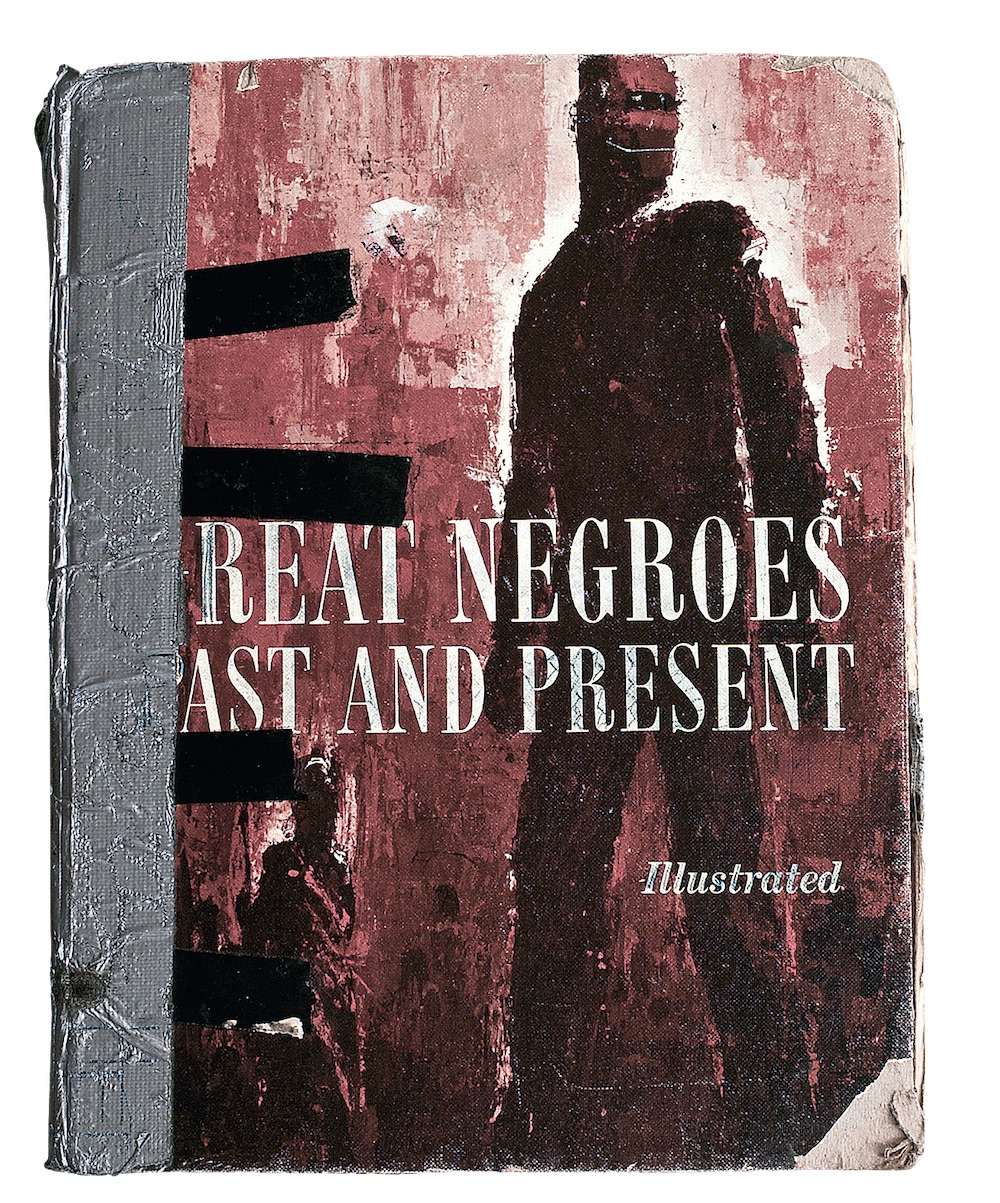
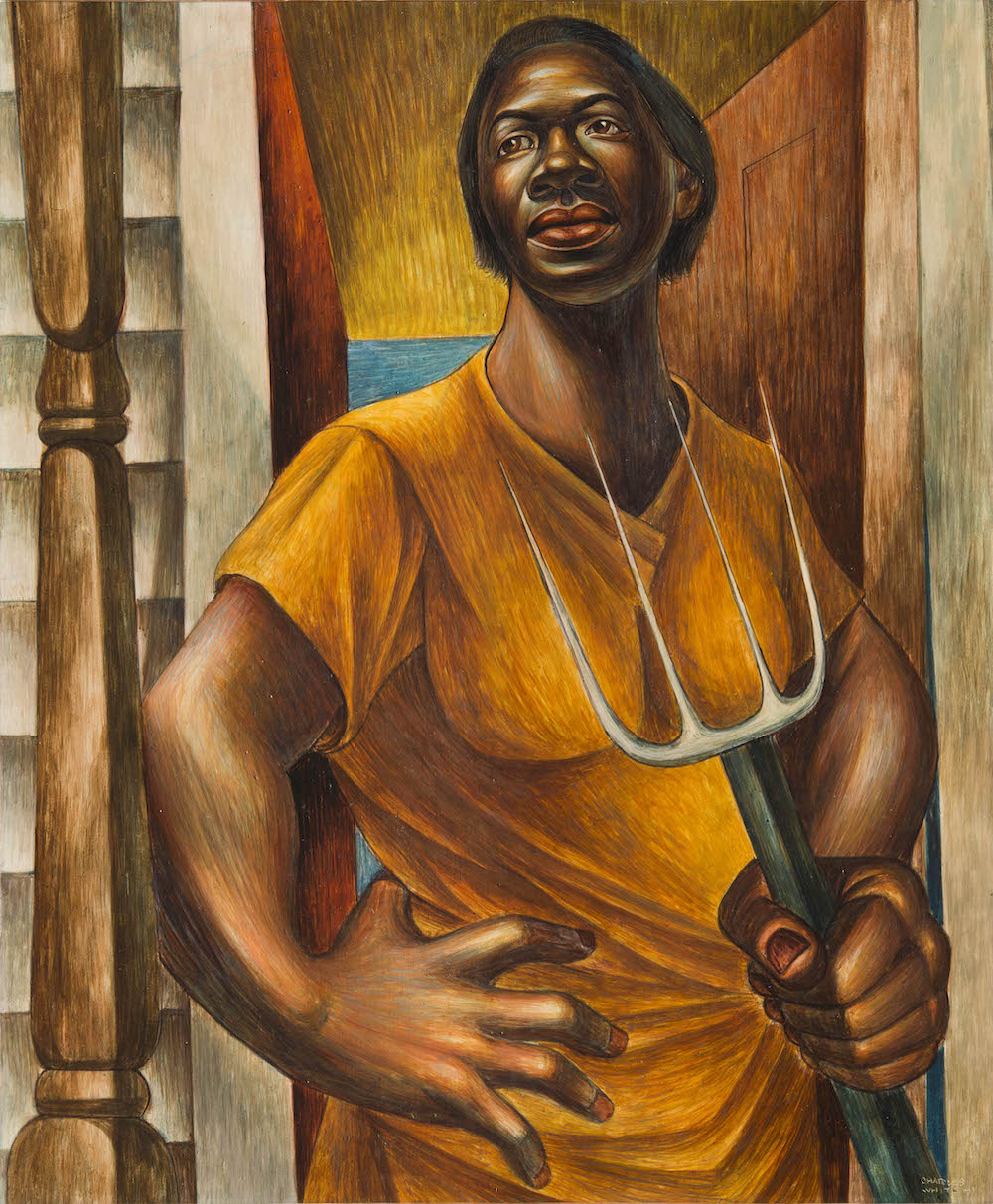
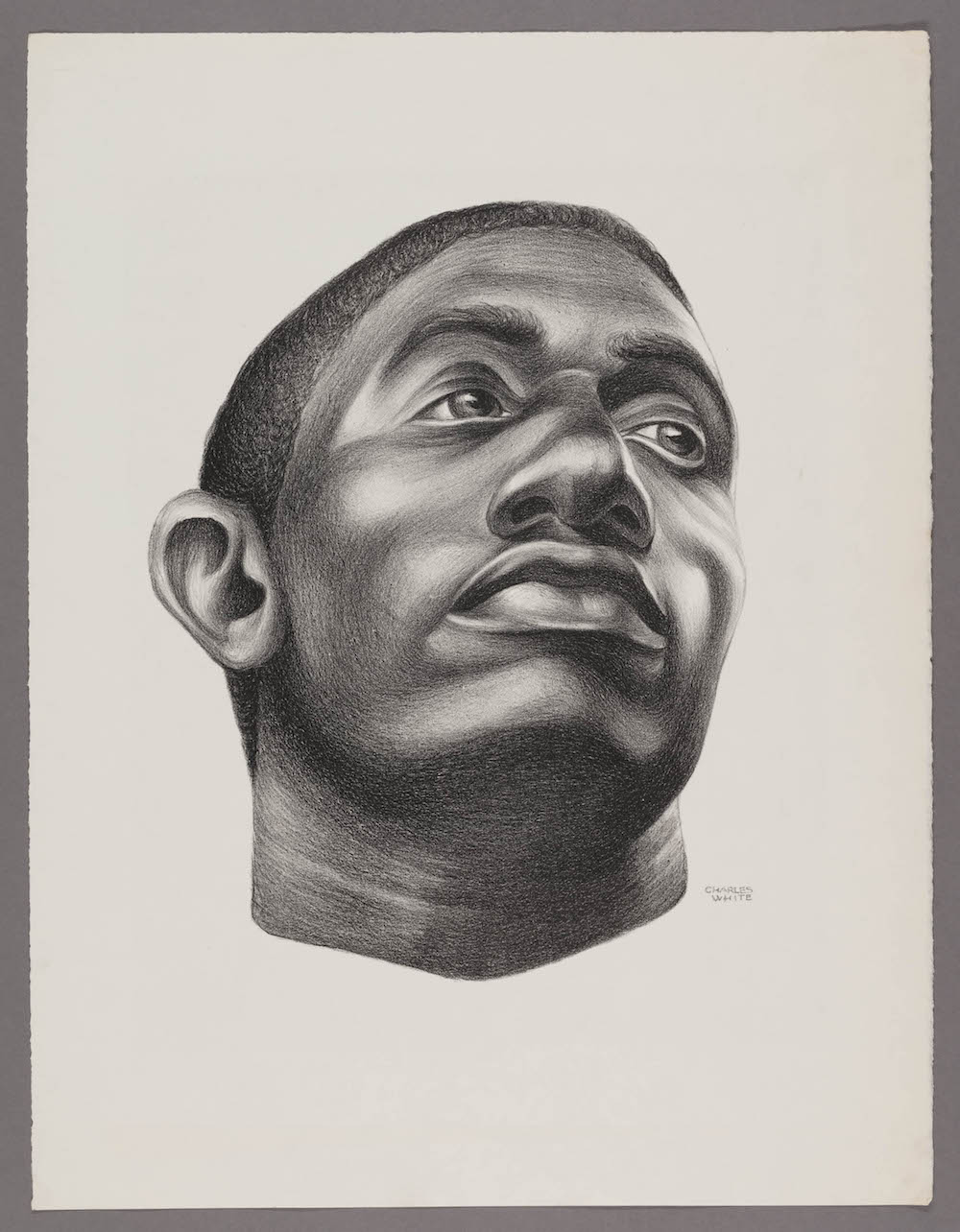
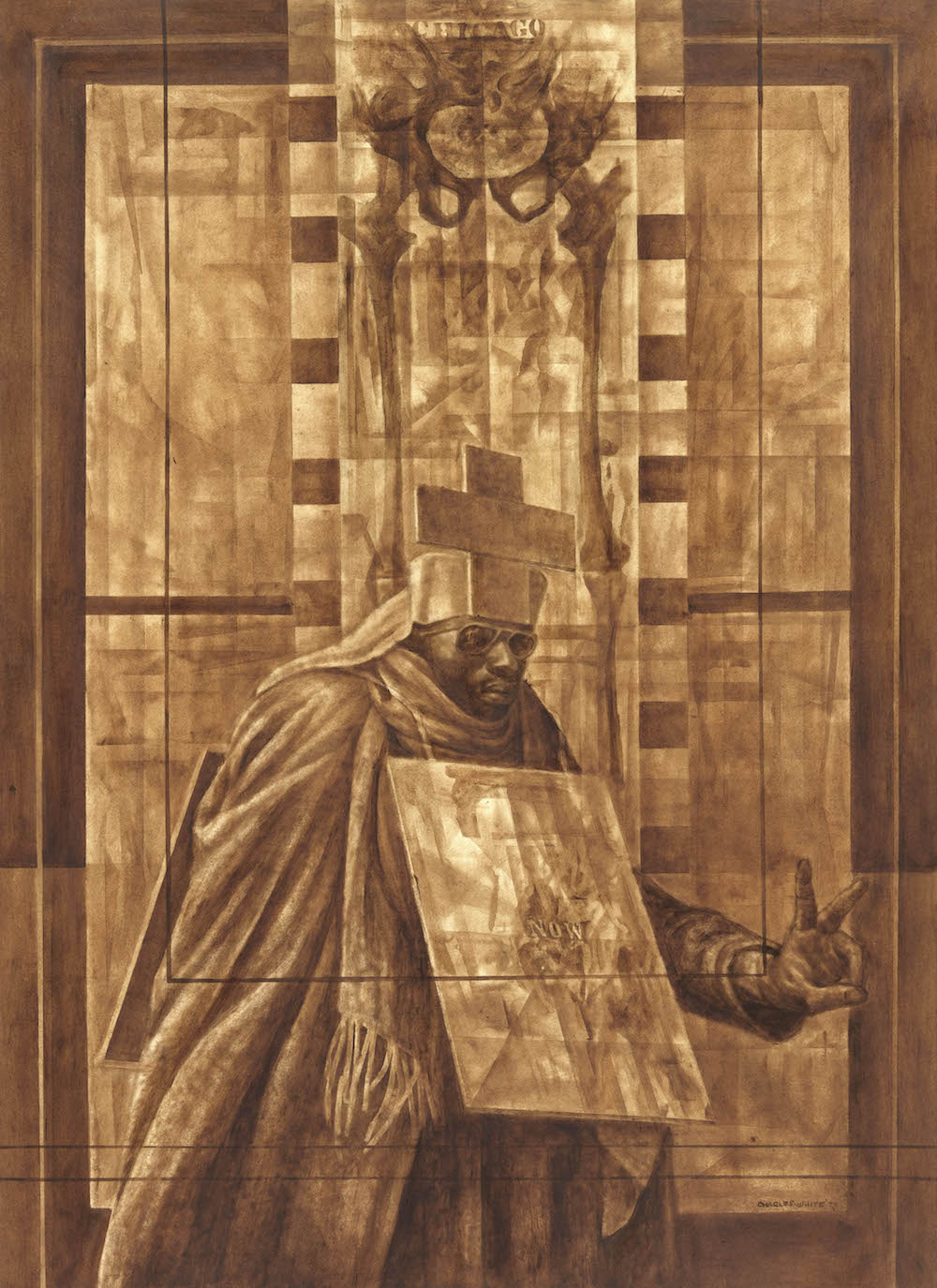
Comments
Post a Comment